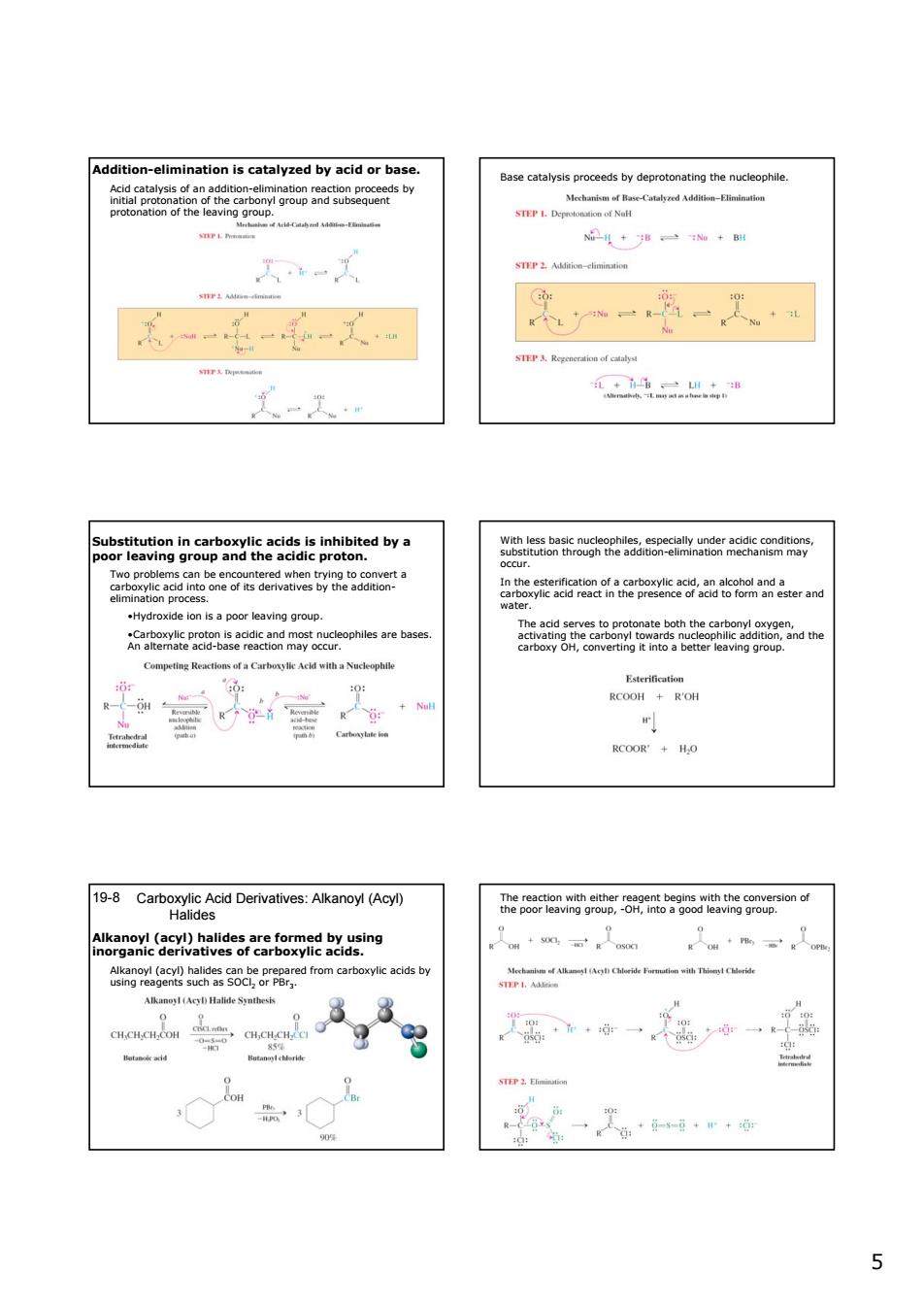正在加载图片...

Addition-elimination is catalyzed by acid or base. m n:-vinon 1 8rtieatiogooapggtheaatpnobheabyd sogegaaa a26w 39w Competing Reactlons of a Carbexyli Acld witha Nacleophile 。0 0: 19-aboryic Acid Derivatves:Akanoy (Acy) hepo8cieavgtpr82nb82o5ah他hggugonod Ak2nomMaeWahaeeefrtowCbgidin9 ng92hsS0c。2 Pred1 from xylic acids by 一。 5 5 Addition-elimination is catalyzed by acid or base. Acid catalysis of an addition-elimination reaction proceeds by initial protonation of the carbonyl group and subsequent protonation of the leaving group. Base catalysis proceeds by deprotonating the nucleophile. Substitution in carboxylic acids is inhibited by a poor leaving group and the acidic proton. Two problems can be encountered when trying to convert a carboxylic acid into one of its derivatives by the additionelimination process. •Hydroxide ion is a poor leaving group. •Carboxylic proton is acidic and most nucleophiles are bases. An alternate acid-base reaction may occur. With less basic nucleophiles, especially under acidic conditions, substitution through the addition-elimination mechanism may occur. In the esterification of a carboxylic acid, an alcohol and a carboxylic acid react in the presence of acid to form an ester and water. The acid serves to protonate both the carbonyl oxygen, activating the carbonyl towards nucleophilic addition, and the carboxy OH, converting it into a better leaving group. Carboxylic Acid Derivatives: Alkanoyl (Acyl) Halides 19-8 Alkanoyl (acyl) halides are formed by using inorganic derivatives of carboxylic acids. Alkanoyl (acyl) halides can be prepared from carboxylic acids by using reagents such as SOCl2 or PBr3. The reaction with either reagent begins with the conversion of the poor leaving group, -OH, into a good leaving group